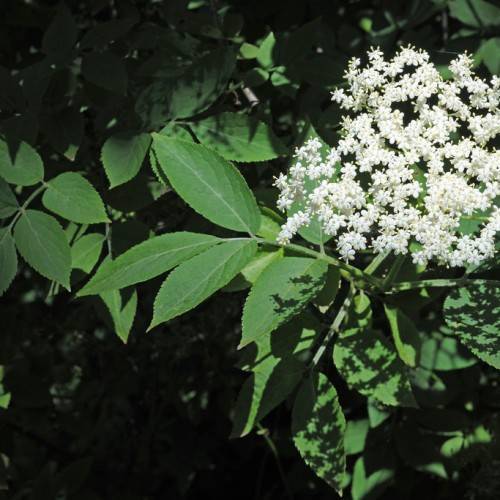
black elder
Sambucus nigra 'Pendula'
Also Known As - European elderCycle:
Perennial
Watering:
Frequent
Hardiness Zone:
5 - 8
Flowers:
Flowers In Summer
Sun:
Full sun only if soil kept moist, Part sun/part shade
Soil:
Sandy Clay
Fruits:
Fruits In Summer Ready In Fall
Edible:
Yes
Leaf:
Yes
Growth Rate:
Moderate
Maintenance:
High
Drought Tolerant:
Yes
Care Level:
Medium
watering
For Black Elder (Sambucus nigra 'Pendula') plants, water 2 to 3 times per week, depending on the season and weather. In the summer, water for a longer period of time and more often to ensure the soil is consistently moist. In the winter, watering should be kept to a minimum as the plant is naturally entering dormancy. Generally, a good rule of thumb is to water until the soil is moist to a depth of 6 to 8 inches. Be sure to allow the soil to dry slightly in-between each watering. Reduce the frequency of water if the leaves of the Black Elder become wilted or yellowed; this is a sign of overwatering. During periods of drought or extreme heat, water more frequently in order to sustain the plant.
sunlight
Black elder (Sambucus nigra 'Pendula') plants thrive best in full sunlight, receiving at least 6 hours per day. During the summer months, when the days are longer, the plant should receive 8 to 10 hours of direct sunlight. During the winter months, when the day length is shorter, 4 to 6 hours of direct sunlight is sufficient. When grown in partial sun, the plant may require supplemental light to supplement the natural light hours.
pruning
Black elder (Sambucus nigra 'Pendula') should be pruned in late winter or early spring. It's best to prune new growth back to only 2 or 3 healthy buds for the first couple of years to encourage bushy growth; in the third year, prune a third of the stems to the ground to create an open, vase-shaped canopy. After that, cut any dead or weak shoots but carry out minimal pruning each year.
